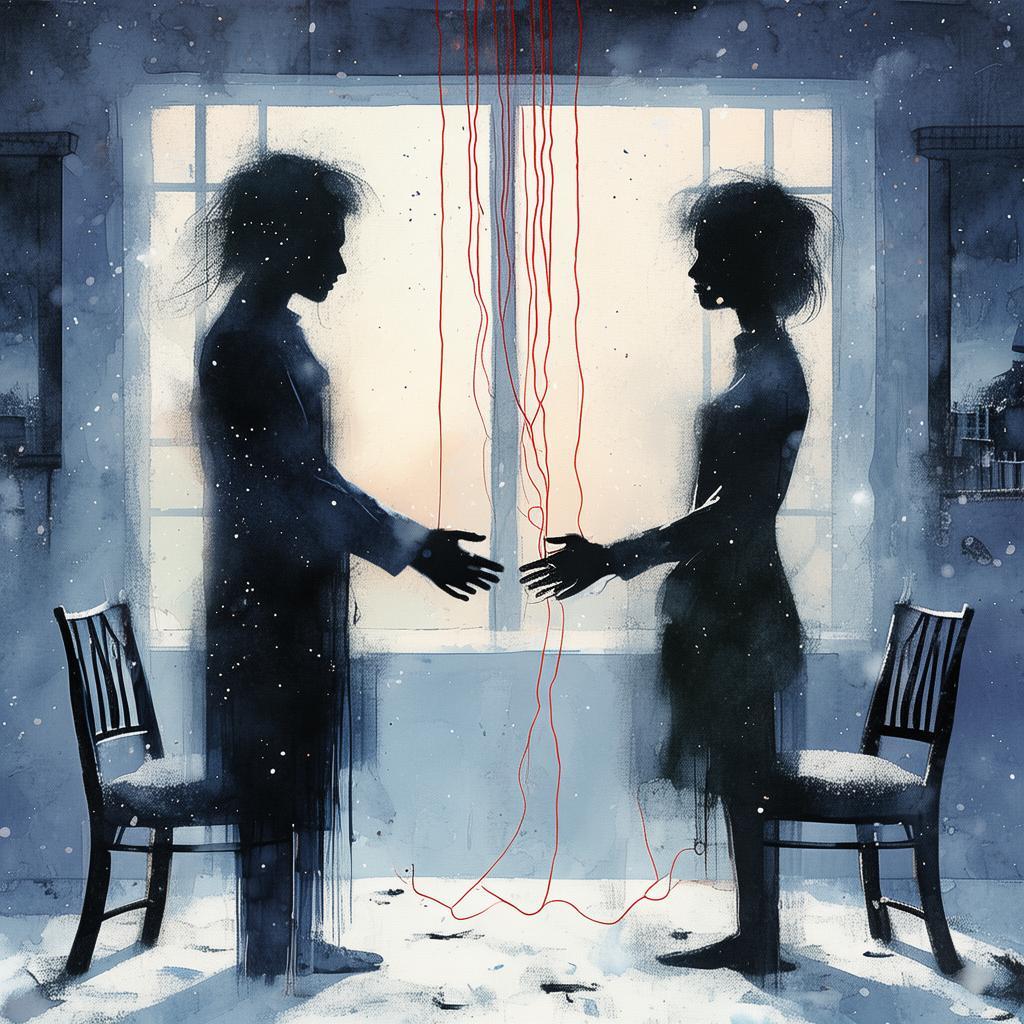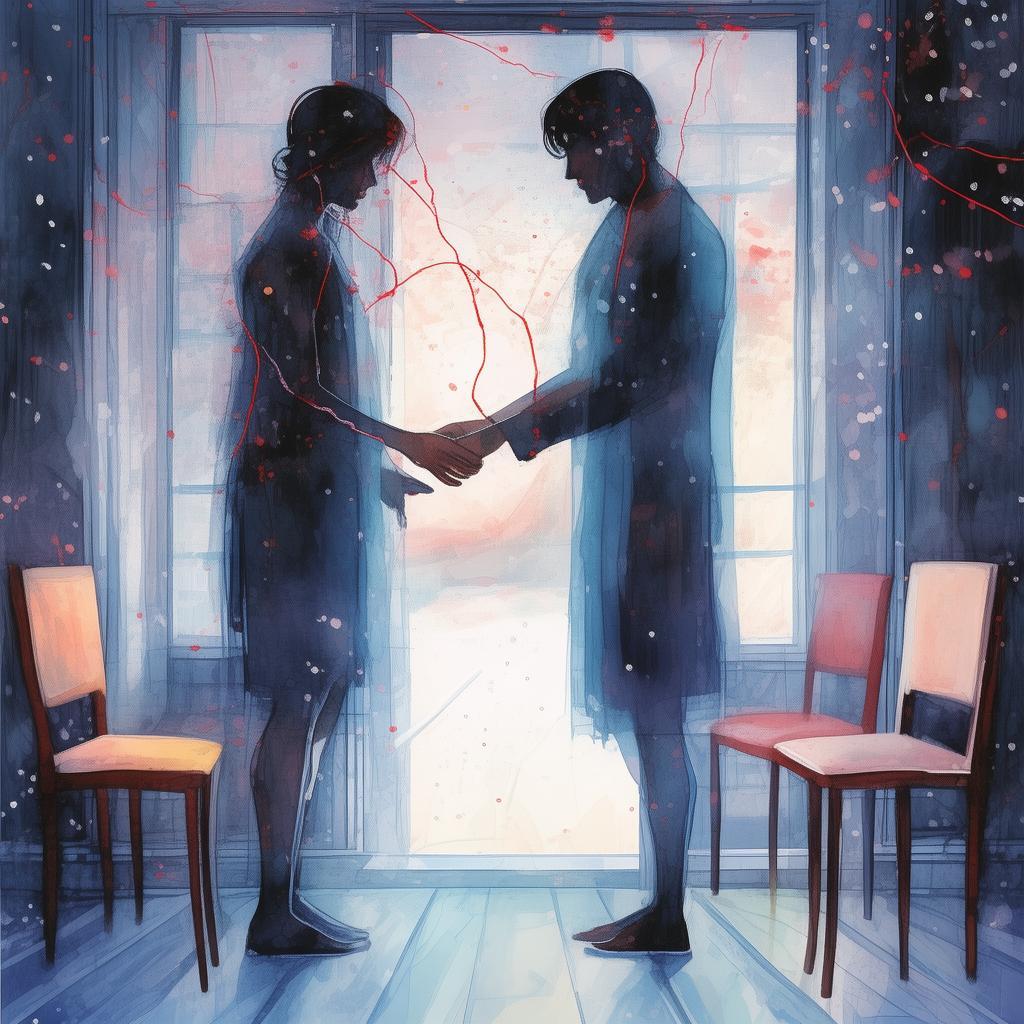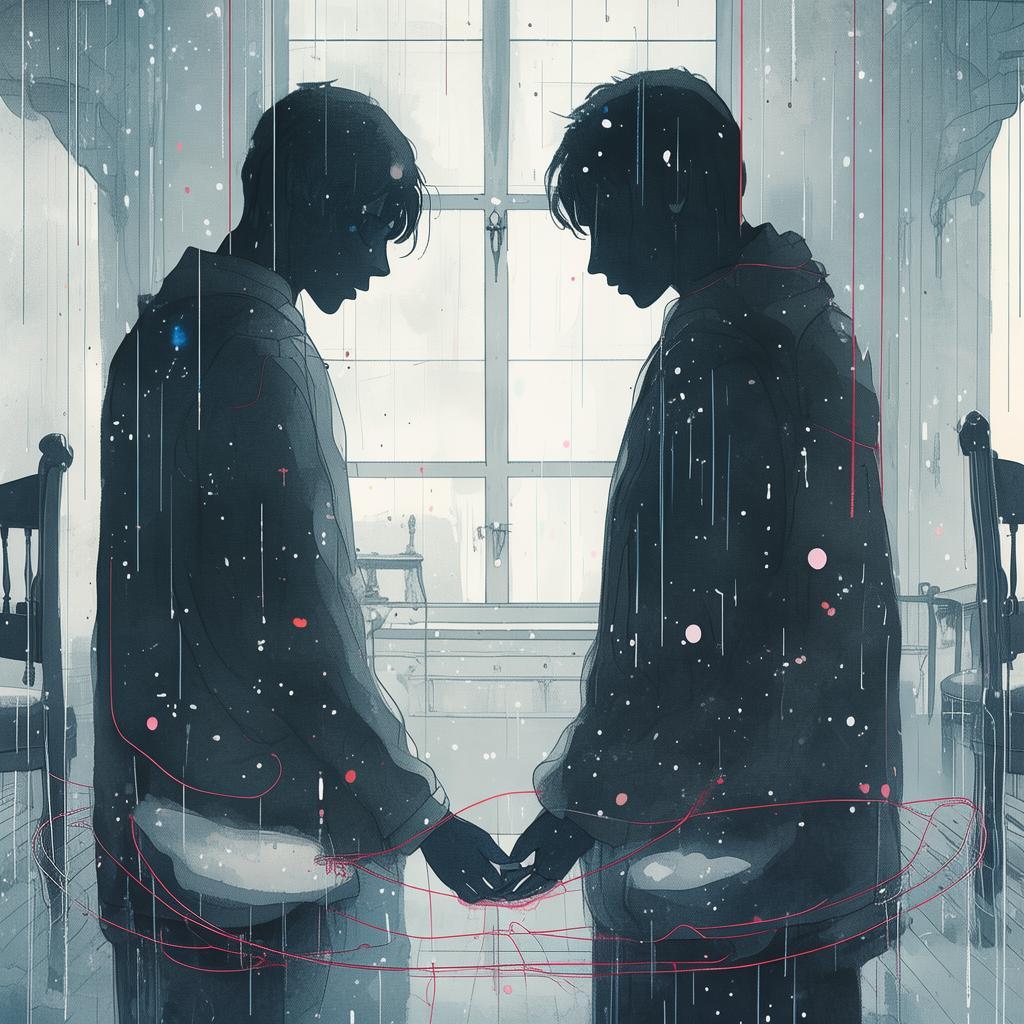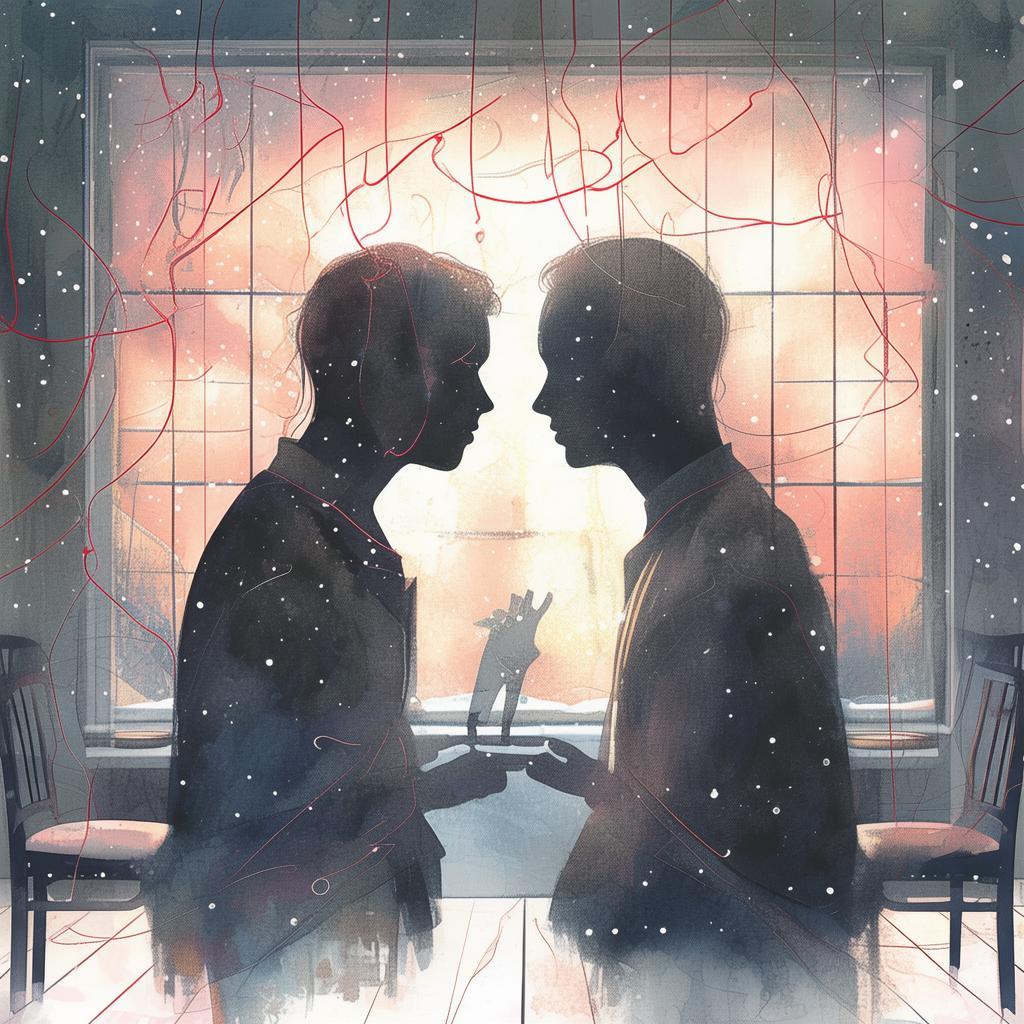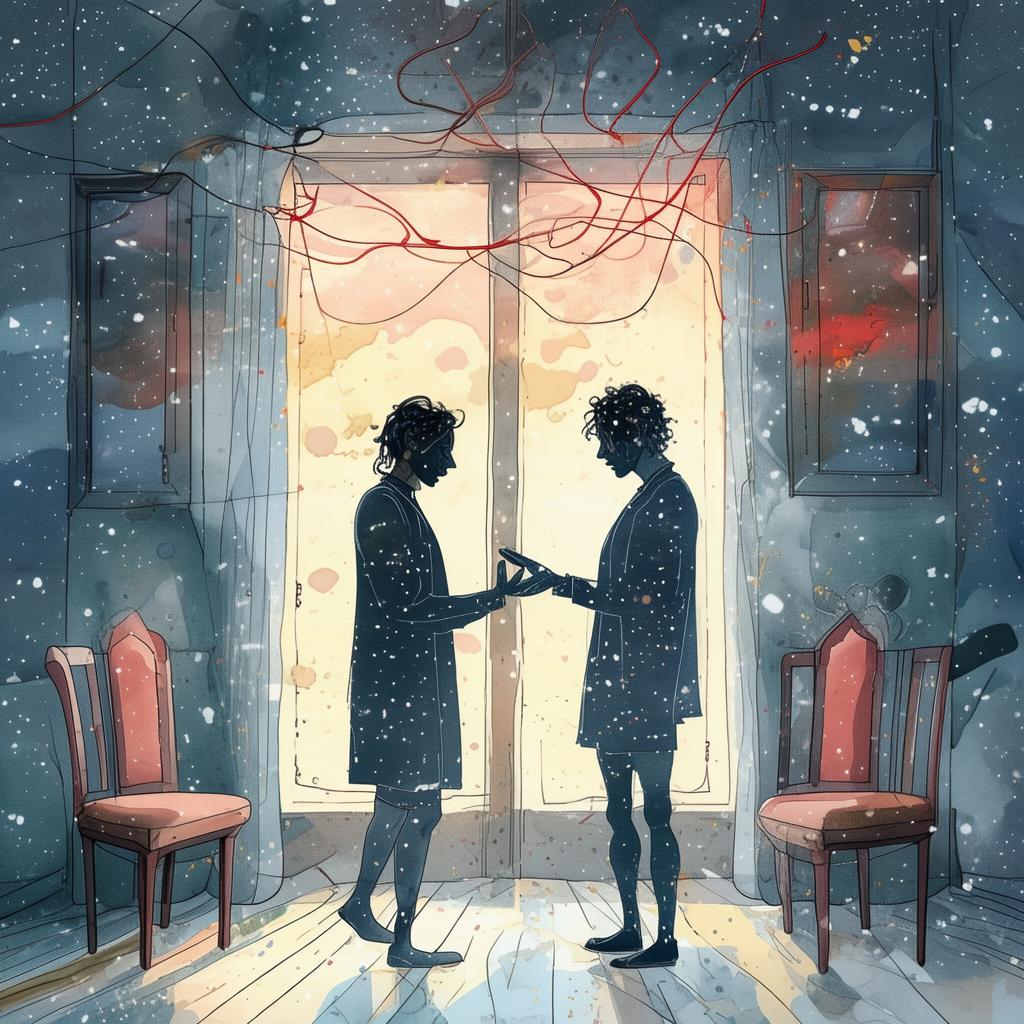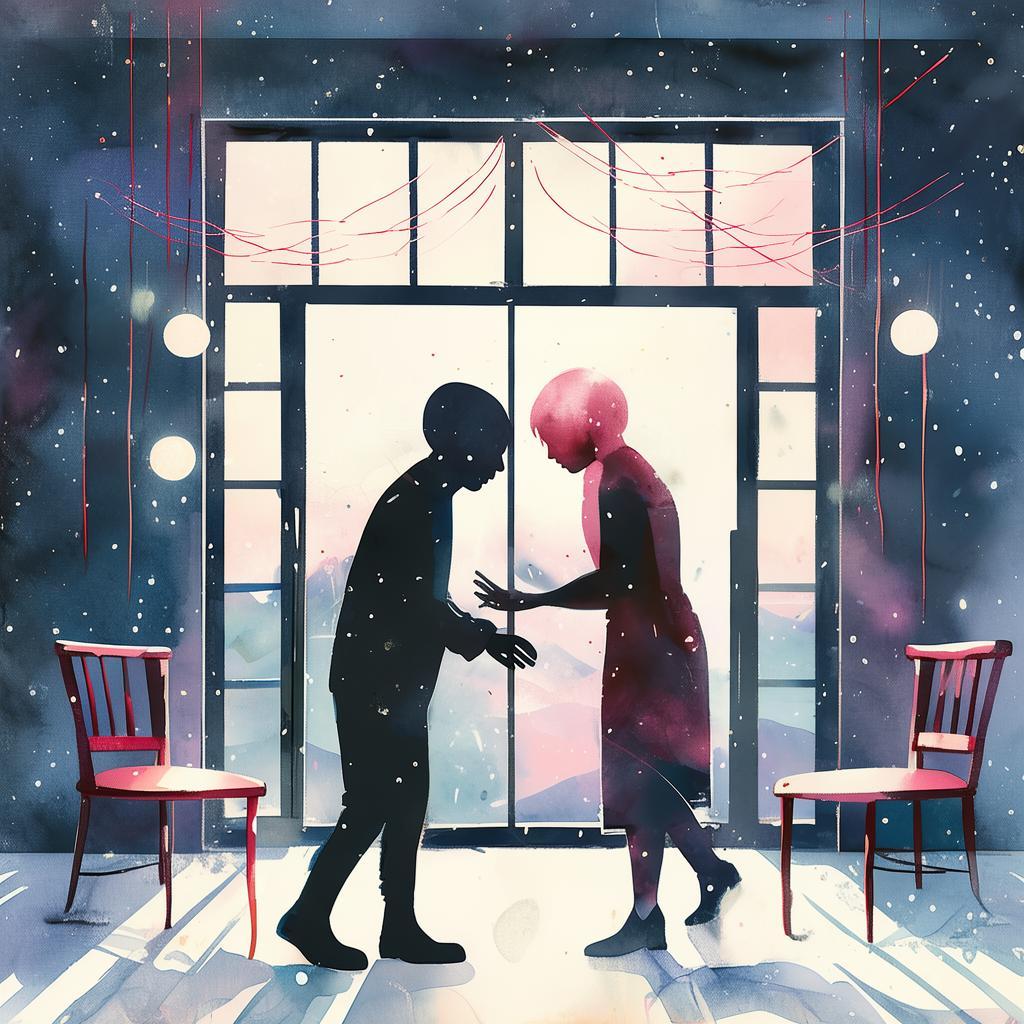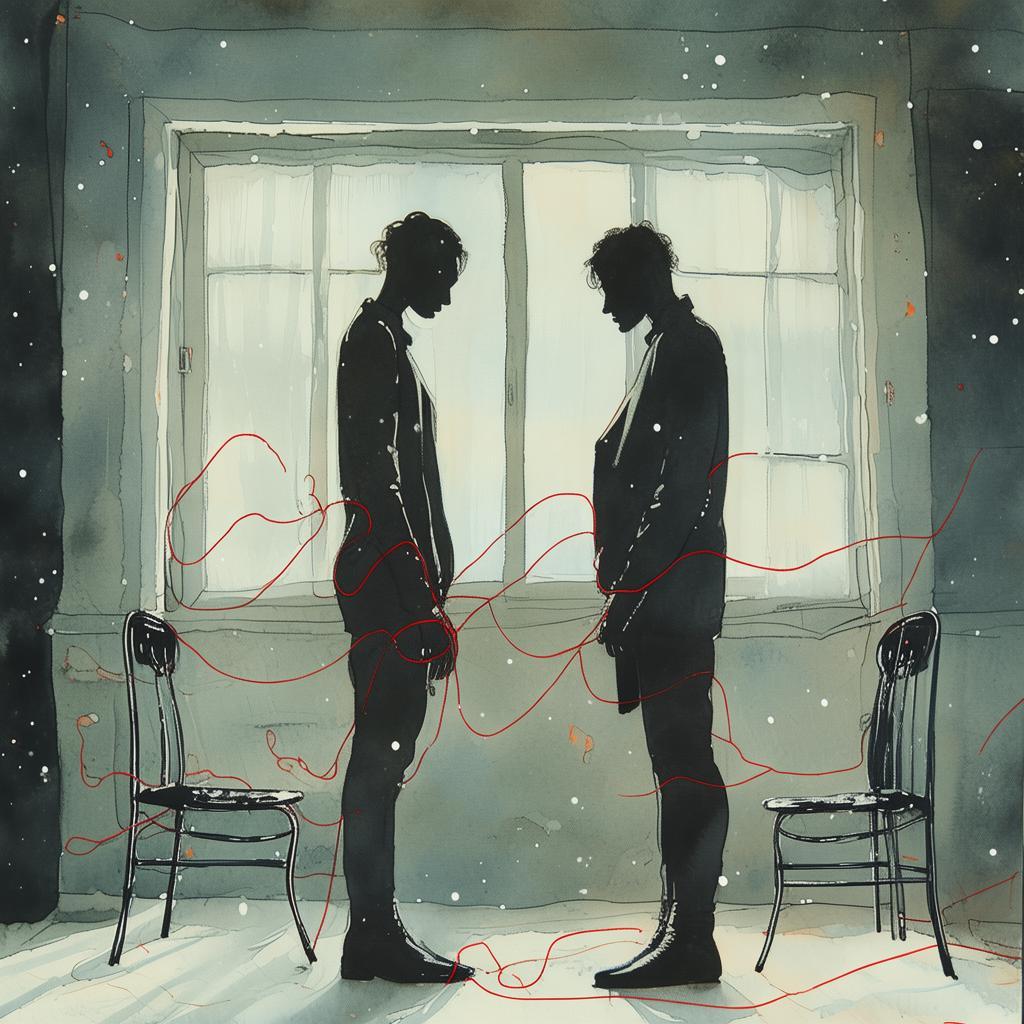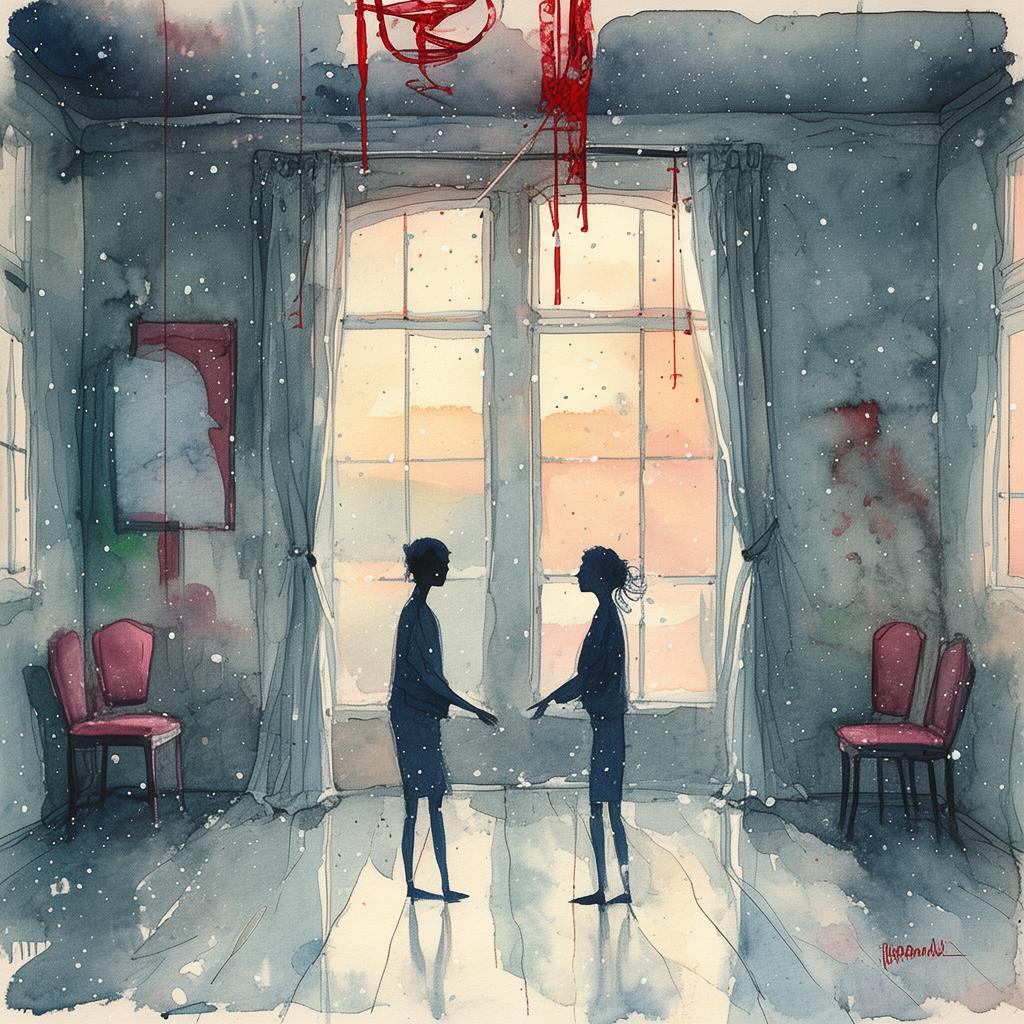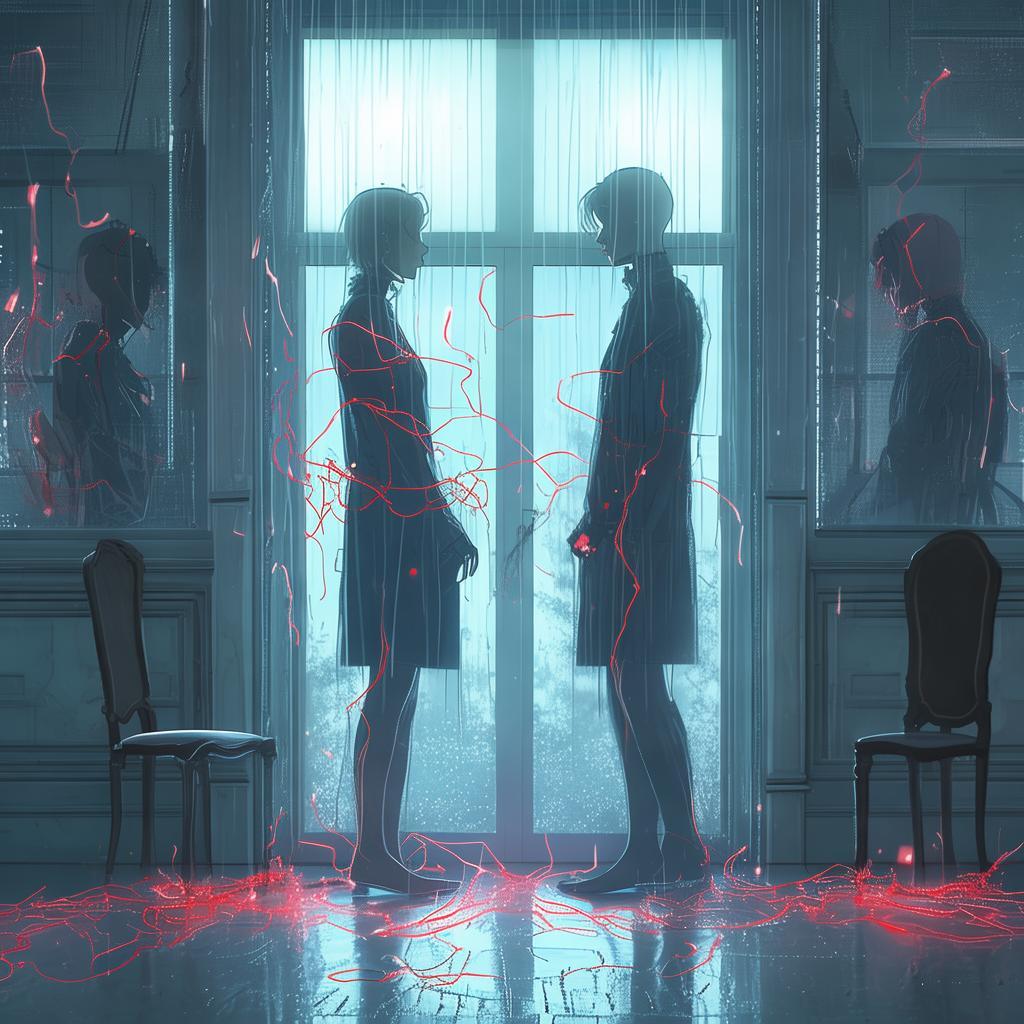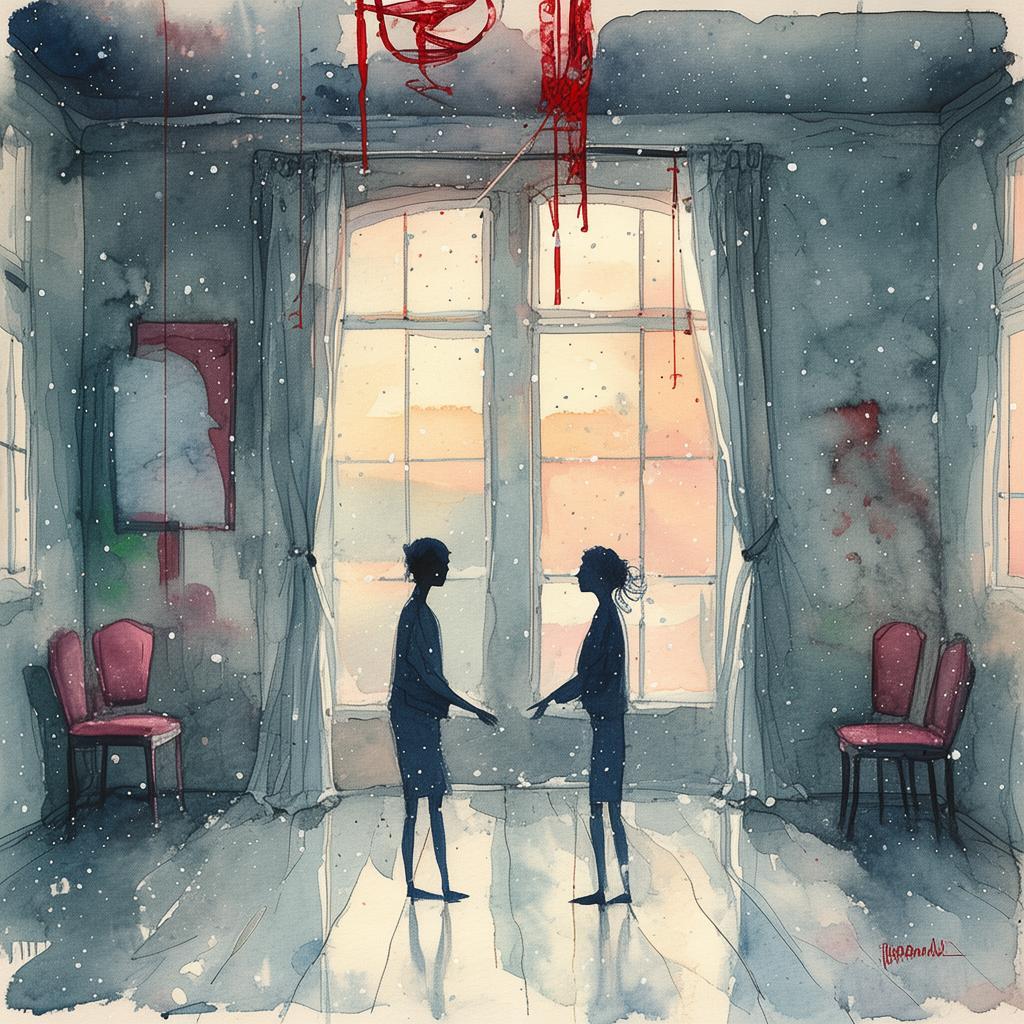The Sinful Muse: The Artist's Obsession
The grand gallery stood as a silent witness to the birth of an obsession, its walls adorned with masterpieces that seemed to pulse with the very essence of life. The air was thick with the scent of paint and the musk of the canvas, a blend that always seemed to inspire a sense of elation and despair.
Among the patrons of the gallery, there was a young artist named Kian, whose work was as enigmatic as it was mesmerizing. His latest creation, a painting of a serene landscape, was on display, but it was the figures in the distance that held the eye—a man and a boy, their eyes locked in an eternal gaze that transcended the canvas itself.
Liu, a seasoned critic, approached the painting with a mixture of reverence and curiosity. The artist's name was on the plaque below the frame, but it was the art that spoke the most. "Kian," Liu whispered to himself, "who are these two?" The painting seemed to beckon him closer, as if it held a secret too profound for words.
That night, Kian stood in the quiet of his studio, a canvas in front of him, his brush dancing over the surface as if possessed. He painted the same scene, over and over, the figures more vivid each time. The muse was calling, and Kian was compelled to respond. It was an obsession, a consuming force that seemed to consume not only his time but his very soul.
Days turned into weeks, and Kian's world became ever more intertwined with the painting. He became obsessed with the idea of the man and the boy, their connection transcending time and space. He spoke of them in his dreams, in his sketches, and in the whispers of his heart.
One evening, as Kian worked, there was a knock at the door. It was Liu, the critic, standing in the doorway, his eyes reflecting a profound curiosity. "Kian," he said, his voice barely above a whisper, "I believe I know who those two are."
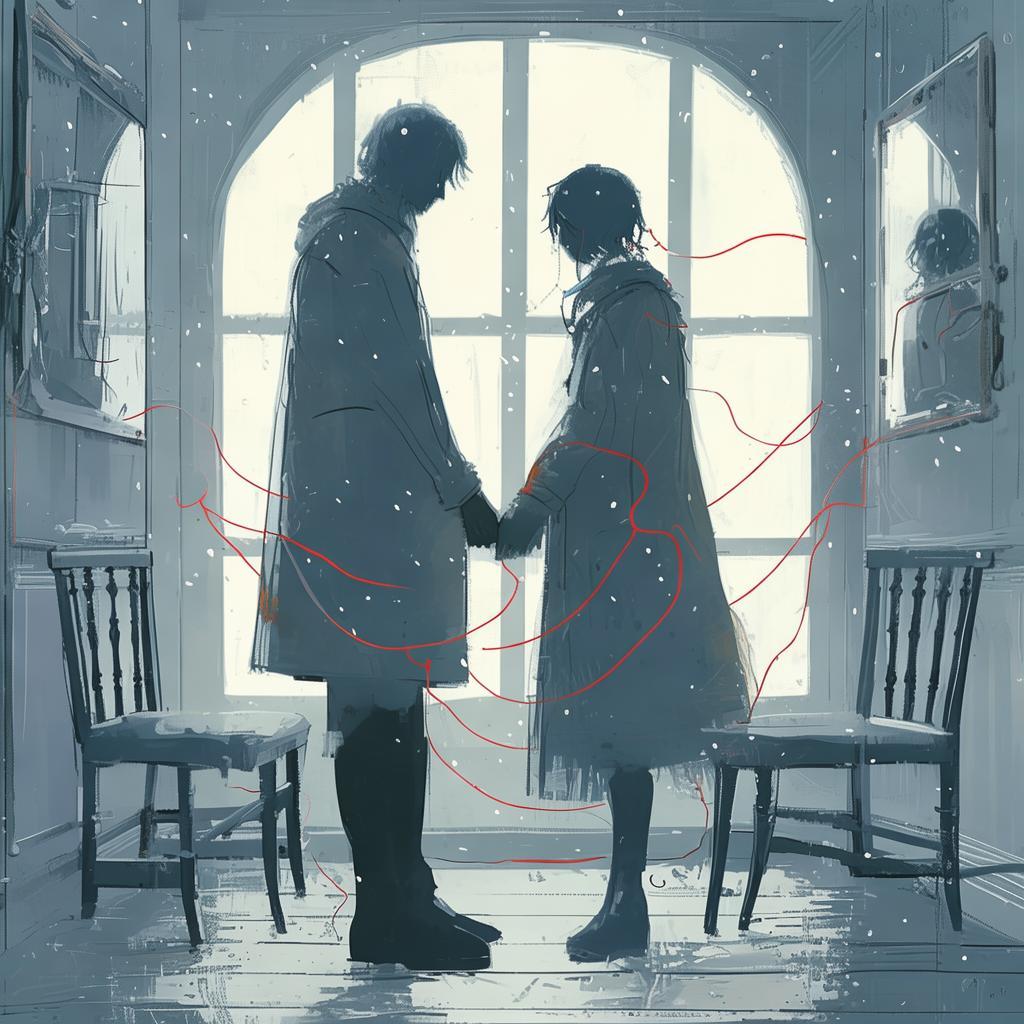
Kian's heart raced. "You do?"
Liu nodded, his eyes filled with a mixture of sorrow and awe. "They are my son, and his mentor. The mentor died years ago, and my son has never known his true identity. The painting... it's a part of him, Kian. You've captured his essence."
Kian's breath caught in his throat. The painting, the obsession, it was more than he had ever imagined. It was a bridge to a world he had never seen, a connection to someone he had never met.
As the days passed, Kian and Liu formed an unspoken bond. They shared stories, laughter, and tears. Kian began to paint the real-life figures, and his art transformed into something even more profound. It was as if the painting was alive, and it was Kian who had brought it to life.
But the obsession was a double-edged sword. As Kian's connection to the figures deepened, so did his own struggles. The drive to create became a burden, a heavy weight on his shoulders that he could not bear alone.
Liu noticed the change in Kian, the once vibrant spirit now muted by the pressure of his own creation. "You need to let go," he told him, his voice filled with compassion. "Let the art live beyond you. Let the figures speak for themselves."
Kian's heart was torn. He knew what Liu said was true, but the thought of not being the one to bring these stories to light was almost unbearable.
The climax came during one of Kian's most intense creative sessions. He was painting the scene of the mentor's death, the brushstrokes violent and unyielding. Liu watched, his eyes filled with worry, as Kian's body tensed with emotion.
When the painting was finished, Kian stepped back, and there, in the stark silence of the studio, the scene unfolded. The figures in the painting moved, their eyes now glowing with a life that seemed to have always been there. It was a moment of revelation, of connection, and of understanding.
Liu stepped forward, his hands reaching out to the figures. "Thank you," he whispered. "Thank you for this."
Kian looked at his mentor and his son, the bond that had been forged through the paint and the canvas. He realized that the obsession had been a test, not just of his skill but of his humanity.
In the end, Kian found peace. The obsession had taught him about love, loss, and the enduring power of art. He knew that the figures would continue to live, their story etched in the hearts of all who beheld the painting.
As he looked around his studio, now filled with his new works, Kian felt a sense of contentment. He had found the true purpose of his obsession, the reason he had painted with such intensity. It was not just to capture a moment in time, but to honor the connection between people, to show that in the depths of the human spirit, love and loss could coexist, could be transformed into something beautiful.
And so, Kian continued to paint, each stroke a testament to the power of the muse, the drive that had nearly consumed him, but ultimately saved him. For in the end, the obsession had led him to the truth, and in the truth, he found his redemption.
✨ Original Statement ✨
All articles published on this website (including but not limited to text, images, videos, and other content) are original or authorized for reposting and are protected by relevant laws. Without the explicit written permission of this website, no individual or organization may copy, modify, repost, or use the content for commercial purposes.
If you need to quote or cooperate, please contact this site for authorization. We reserve the right to pursue legal responsibility for any unauthorized use.
Hereby declared.
